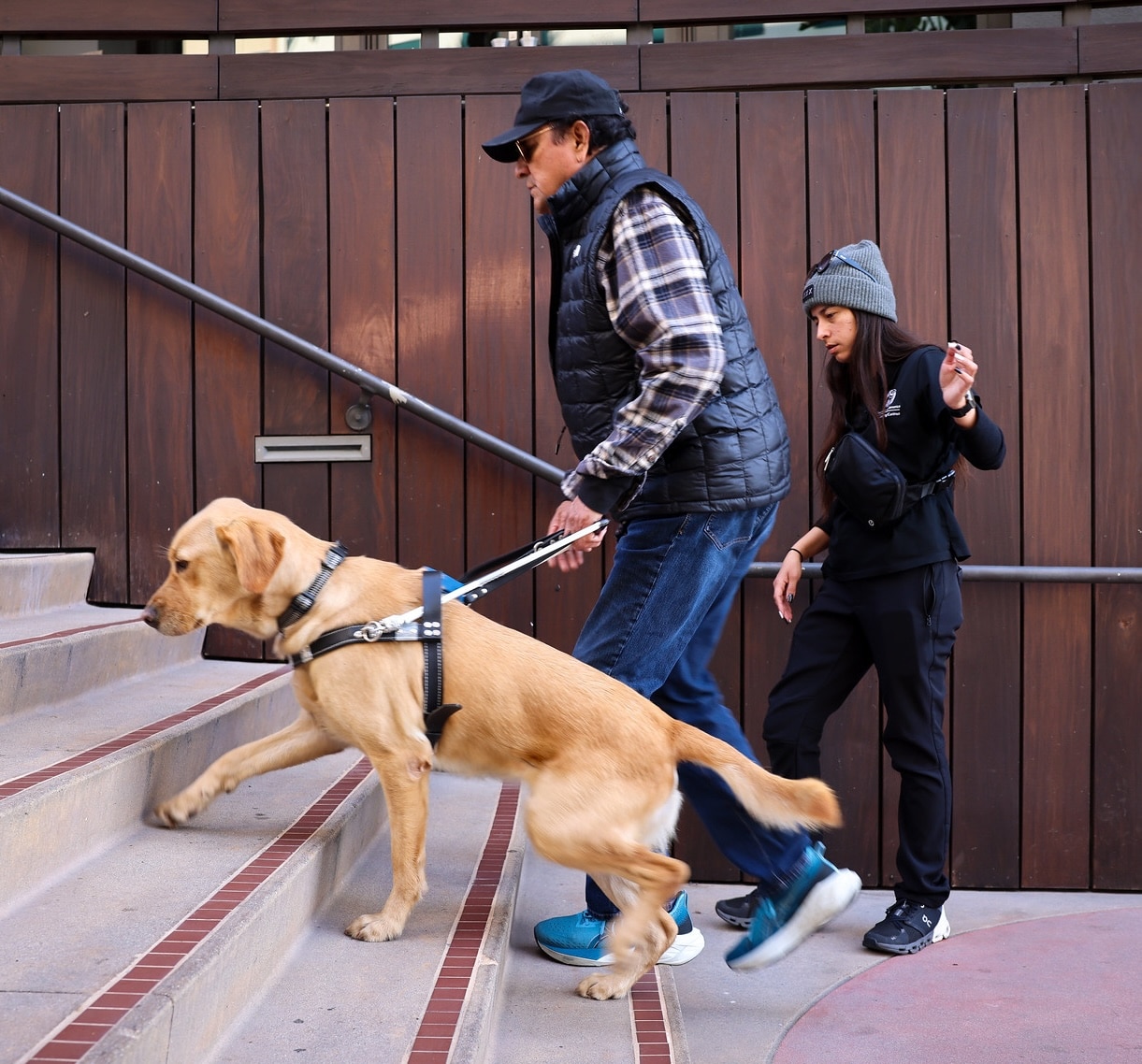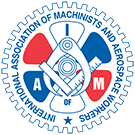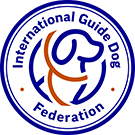From Architect to Advocate: How a Guide Dog Transformed One Man’s Life After Vision Loss
At age 72, Gilberto (Beto) carries himself with the quiet confidence of someone who has lived many lives. In his El Paso home, surrounded by the memories of a rich and varied career, he speaks with the warm cadence of a man who has found peace in unexpected places. This retired architect, father of three, and devoted partner to his adoring, Patricia, has spent decades designing sacred spaces and chasing dreams on horseback.
Today, his most important companion walks on four legs and answers to the name Bruno.
Growing up in El Paso, close to the Mexican border where two cultures flowed seamlessly together, Beto embraced a life of vibrant contrasts. By day, he was a dedicated student who excelled on the tennis courts from high school well into adulthood. During quick visits to Mexico, he took part in the cherished tradition of the Charro, a Mexican cowboy, or as he fondly describes it, “a gentleman’s gentleman.”
Growing up in El Paso, close to the Mexican border where two cultures flowed seamlessly together, Beto embraced a life of vibrant contrasts. By day, he was a dedicated student who excelled on the tennis courts from high school well into adulthood. During quick visits to Mexico, he took part in the cherished tradition of the Charro, a Mexican cowboy, or as he fondly describes it, “a gentleman’s gentleman.”
The world of Charros was far more than sport to Beto; it was community, tradition, and artistry rolled into one. Unlike rodeo competitions, Charro events were team endeavors where riders competed together, supported one another, and celebrated as one. “It was as much a social organization as it was a sport,” Beto recalls, his voice carrying the warmth of cherished memories. Those evenings spent riding broncos and bulls weren’t just about conquest, they were about connection, something that would prove invaluable in the years to come.
This same sense of purpose and community guided Beto’s professional life. His specialty was extraordinary: redesigning 5th century Classical Byzantine Churches across New York, Texas, Virginia, and New Jersey. Each project was a careful balance of ancient tradition and modern need. For Beto, architecture wasn’t just about buildings—it was about creating spaces where people could find meaning, gather in community, and connect with something greater than themselves.
But life, as it often does, had other plans.
A Fade into Darkness
Vision loss ran in Beto’s family through his mother’s line, a genetic predisposition to glaucoma. Still, nothing could have prepared him for how his career might unknowingly accelerate that timeline. Beto was working in downtown NYC on September 11, 2001, when the towers collapsed, engulfed in the cloud of smoke and debris that would haunt so many. He vividly remembers standing in Liberty Park, watching in disbelief as the underside of the plane slammed into the South Tower. While no definitive research confirms the connection, Beto believes that day may have marked the beginning of his journey toward blindness.
The loss came gradually. First one eye, then his right eye began to fail. Despite multiple surgeries that slowed the progression, Beto was eventually left with only light perception. For a man who had “lived a very visual life,” the transition was devastating. “It was the most profound part of my life when I was doing that kind of work, so to all of a sudden not have sight, it was a heavy transition,” Beto recalled.
From Acceptance to Bond: Meeting Bruno
It was Greg, our Sr. Manager of Admissions, who became instrumental in helping Beto accept his new reality and ultimately apply for his first guide dog. Sometimes the most important conversations happen with individuals who understand exactly what you’re going through.
Then came Bruno, a golden lab mix who would soon become far more than a working guide dog. When asked about his preferred dog coat color, Beto chose the golden lab mix for a beautifully simple reason: “I could find his eyes.” Still possessing some vision when they first met, Beto wanted to be able to connect with his new partner on that most fundamental level.
Their first meeting exceeded every expectation. “There was excitement and anticipation, but this was not like anything that I could’ve imagined,” Beto remembers. “It was an instant connection. He came right up to me and just wanted to be loved from the get-go, so it was an immediate bond.”
Redesigning Life: A New Normal
Yet even with Bruno by his side, Beto still grapples with the profound shift in his identity. His architectural career had been such a defining part of who he was that losing his sight felt like losing himself. The visual world that had been his canvas, his playground, his profession, had become inaccessible.
But Bruno changed everything. “Bruno takes care of me so well so I can walk normally down the sidewalk,” Beto explains. “Without him, I’m stuck in my house. I’m literally on an island without my ability to move.” What might sound like simple mobility to others represents complete independence to Beto, the difference between isolation and engagement, between existing and truly living.
With Bruno, Beto began to reimagine what his life could look like, laying the foundation for something new, built on trust, partnership, and resilience.
Today, Beto has found his “new normal,” a phrase he uses with acceptance rather than resignation. He’s discovered new passions: listening to books, enjoying classic black and white films, and taking memoir-writing classes at UTEP’s Osher Lifelong Learning Institute. His goal is to create an audible memoir for his children—Julian, Gilberto Jr., and Lorenz—as well as his grandchildren, ensuring his stories of charros and churches, love and loss, will echo through generations.
“Bruno’s just an incredible partner and just a beautiful boy and just my buddy. I can do things with Bruno,” Beto says, his voice carrying gratitude and wonder. More than a guide dog, Bruno is the keystone in a new structure Beto is building—not of brick and mortar, but of courage and connection. Though he no longer drafts churches or sketches skylines, Beto is still creating something sacred: a life shaped not by limitation, but by purpose. He now serves as an advocate for others navigating vision loss, offering the same support and understanding that once helped him find his way.
With Bruno guiding each step, Beto proves that even when the blueprints change, there is still beauty to be built.
Resources for Vision Loss Support
If you or a loved one is facing vision loss, remember that help is available. Guide dog organizations and ommunity support groups can provide the resources and connections needed to build a fulfilling life after sight loss.
Beto’s journey with Bruno proves that even when the blueprints change, there is still beauty to be built. With the right support, training, and four-legged companion, independence and joy remain within reach.
About Guide Dog Training: Guide dogs undergo extensive training to help people with visual impairments navigate the world safely and independently. The bond between handler and dog often extends far beyond the working relationship, creating partnerships built on trust, love, and mutual respect.
About Guide Dogs of America | Tender Loving Canines
Guide Dogs of America | Tender Loving Canines provides expertly trained service dogs to individuals and families at no cost. Learn more about our programs by visiting our page HERE.








